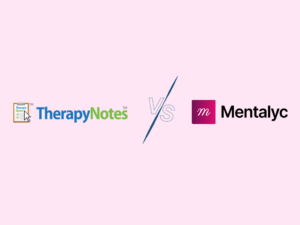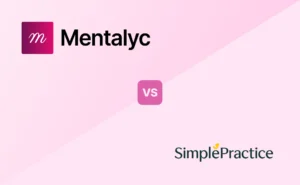While the American ICD-10-CM system (effective October 2023) includes the code F43.1, it’s not recommended for billing purposes. This is because more specific codes exist within the F43.1 category, offering greater detail for diagnoses. International versions of ICD-10 may have different practices regarding F43.1.
ICD-10 Code for PTSD
Posttraumatic stress disorder (PTSD) is a psychiatric disorder that may occur in people who have experienced or witnessed a traumatic event or emotionally or physically harmful or life-threatening series of events or circumstances. PTSD can affect mental, physical, social, and/or spiritual well-being. Examples of traumatic events include natural disasters, accidents, terrorist acts, war, combat, rape, sexual assault, historical trauma, intimate partner violence, and bullying.
During World War I, PTSD was called “shell shock,” and “combat fatigue” after World War II. PTSD does not just happen to combat veterans, as it occurs in all people, of any ethnicity, nationality, or culture, and at any age. PTSD affects approximately 3.6% of U.S. adults every year (Harvard Medical School, 2007).
The lifetime prevalence of PTSD in adolescents ages 13 -18 is 8%. An estimated 1 in 11 people will be diagnosed with PTSD in their lifetime. Women are twice as likely as men to have PTSD, and three ethnic groups (Latinos, African Americans, and Native Americans/Alaska Natives) are disproportionately affected and have higher rates of PTSD than non-Latino whites in the United States (Harvard Medical School, 2007).

New! Transfer your notes to EHR with a single click. No more copy-pasting.
People with PTSD often experience:
-intense, disturbing thoughts and feelings related to the trauma that last long after the event ended
-reliving the event through flashbacks or nightmares
-sadness
-fear
-anger
-detachment or estrangement from other people
-avoidance of situations or people that remind them of the traumatic event
-strong negative reactions to something as ordinary as a loud noise or someone bumping into them
Anxiety and depression commonly accompany these symptoms and thoughts of suicide may occur. The onset typically occurs after the traumatic event but can sometimes be delayed by a few weeks or even months.
The general code for PTSD, according to the ICD-10, is F43.1. In clinical settings, mental health professionals would utilize one of the following three specifier codes:
F43.10: Posttraumatic stress disorder, unspecified. Criteria are met for PTSD but the onset and duration are somewhat murky and cannot be clearly delineated.
F43.11: Posttraumatic stress disorder, acute. In the acute form, the duration of the symptoms is between 1 to 3 months. Symptoms must be present for at least a few weeks to be diagnosed as PTSD.
F43.12: Posttraumatic stress disorder, chronic. In the chronic form, symptoms last more than 3 months.
- The first criterion involves exposure to an event that is considered “threatening or catastrophic.” This means it goes beyond what one would typically experience in life, a classic example being involvement in combat during a war.
2. The second criterion involves recollection or reliving of the event, which includes, at least one of these symptoms:
- Distressing memories, vivid images, thoughts, or perceptions related to the event.
- Troubling dreams or nightmares associated with the trauma.
- Flashbacks that feel like the traumatic event is happening again.
- Reactions when exposed to reminders of the event.
- Intense psychological distress when confronted with external reminders.
3. Clients who experience trauma may exhibit an inclination to avoid situations associated with that situation or event. Avoidance behaviors can manifest in ways such as avoiding thoughts, feelings, external reminders, specific activities, places, and people associated with the event.
For a diagnosis of PTSD, criteria must be met within six months of the traumatic event or by the end of a traumatic period. However, it’s worth noting that delayed onset (beyond six months) is recognized in the DSM-5 (Diagnostic and Statistical Manual of Mental Disorders).
When documenting PTSD for coding purposes it’s important to provide details whenever possible about the cause of PTSD. This may involve detailing the traumatic event(s), the circumstances, and any relevant contextual information. Accurate coding assists mental health providers in communication and ensures appropriate treatment and accurate billing procedures.
ICD-10 Diagnostic Criteria for PTSD
To be diagnosed under ICD-10 specifications, clients must meet criteria including exposure to a severe traumatic event, the experience of recurring memories of the event, and avoidance of reminders of the event for an extended period. It is important to differentiate between conditions such as stress reaction and adjustment disorder, which can sometimes be mistaken for PTSD when using ICD-10 guidelines.
- The client must have been exposed to a stressful event or situation (either brief or long-lasting) of an exceptionally threatening or catastrophic nature, which would likely cause pervasive distress in almost anyone.
- There must be persistent remembering or “reliving” of the stressor in intrusive “flashbacks,” vivid memories, nightmares, or recurring dreams, or in experiencing distress when exposed to circumstances resembling or associated with the stressor.
- The client must exhibit an actual or preferred avoidance of circumstances resembling or associated with the stressor, which was not present before exposure to the stressor.
- Either of the following must be present:
- Inability to recall, either partially or completely, some important aspects of the period of exposure to the stressor.
- Persistent symptoms of increased psychological sensitivity and arousal (not present before exposure to the stressor), shown by any two of the following:
- Difficulty in falling or staying asleep.
- Irritability or outbursts of anger.
- Difficulty in concentrating.
- Exaggerated startle response.
- Criteria must all be met within 6 months of the stressful event or at the end of a period of stress. (For some purposes, onset delayed more than 6 months can be included, but this should be clearly specified.)
Differential Diagnosis
It’s important to note that PTSD is not the only condition that arises from traumatic experiences. There are two disorders often mistaken for PTSD during assessments.
Acute Stress Reaction
Acute Stress Reaction (ICD-10 classification F43.0) is a condition that occurs in response to a stressor. Symptoms are similar to (PTSD), including recurring thoughts of the trauma and avoiding situations that remind the client of the event. Acute stress reactions typically last no longer than a month. If the symptoms persist beyond this timeframe, it is more likely to be PTSD.
Adjustment Disorders
Adjustment Disorders (ICD-10 classification F43.2) share some similarities with PTSD. Like PTSD, adjustment disorders are triggered by a stressor and can manifest as acute or chronic. However, adjustment disorders are distinguished by their symptom cluster, which includes depression, anxiety, behavioral issues, or a combination of these features. The main distinction between adjustment disorders and PTSD lies in the severity of symptoms. Adjustment disorders also emphasize emotional responses rather than avoidance, flashbacks, and intense arousal seen in PTSD.
When diagnosing PTSD according to ICD-10 guidelines, consider these questions:
- What does exposure to the trauma mean to the client?
- Is PTSD exclusive to terrifying events? While diagnosing PTSD based on the ICD-10 guidelines typically requires a specific incident, some professionals advocate for revising these criteria. Whether a clinician is willing to diagnose a client with PTSD after exposure to a milder stressor is a matter of judgment.
At first glance, diagnosing PTSD according to ICD-10 criteria may seem simple. However, there are stress-related disorders that can be easily mistaken for PTSD. In addition, the criteria for PTSD are flexible and open to interpretation. These factors make the diagnosis of PTSD somewhat challenging for mental health professionals.
To truly understand PTSD, it is important to explore the criteria outlined in the DSM-5. This framework helps mental health professionals understand how various symptoms come together to support this disorder. From memories that disrupt daily thoughts to heightened levels of alertness that can distort perception, each aspect of PTSD contributes to the complex challenges faced by clients. The ICD-10 coding (F43.1) serves as a billing tool for clinicians.
Treating PTSD
Fortunately, there are several treatment options available to help clients manage PTSD symptoms. Treatment typically involves a combination of psychotherapy, medication, and supportive interventions.
Psychotherapy:
Psychotherapy is an essential element of PTSD treatment. It involves a therapeutic relationship between the client and a trained mental health professional. Different types can be used to address the specific symptoms and challenges:
- Cognitive Behavioral Therapy (CBT):
CBT is one of the most widely used and effective therapies for PTSD. It focuses on identifying and challenging negative thought patterns and behaviors, allowing clients to learn coping strategies and develop healthier ways of processing and managing triggers.
- Prolonged Exposure Therapy (PE):
Prolonged Exposure Therapy (PE)aims to reduce the distress associated with traumatic memories by gradually exposing the client to trauma-related thoughts, feelings, and situations in a safe and controlled environment – ultimately reducing reactivity to triggers.
- Eye Movement Desensitization and Reprocessing (EMDR):
EMDR involves the use of guided eye movements or other types of bilateral stimulation (like sound) while processing traumatic memories. Memories are reprocessed in a way that reduces their emotional intensity.
- Trauma-Focused Cognitive Behavioral Therapy (TF-CBT):
TF-CBTis often used with children and teens, and it combines CBT techniques with trauma-specific interventions to address the unique needs of younger clients.
Medications:
Medications can be prescribed to help manage symptoms, particularly when therapy alone is insufficient or when symptoms are severe:
- Selective Serotonin Reuptake Inhibitors (SSRIs):
SSRIs are a class of antidepressant medications that increase the levels of serotonin in the brain, which can help regulate mood, reduce anxiety, and alleviate sleep disturbances.
- Serotonin-Norepinephrine Reuptake Inhibitors (SNRIs):
SNRIs also impact neurotransmitters related to mood regulation.
- Prazosin:
Prazosinis prescribed to help alleviate nightmares and sleep disturbances by reducing the adrenaline response that contributes to these symptoms.
Complementary and Supportive Interventions:
Complementary and Supportive Interventions may include the following:
- Mindfulness and Meditation:
Mindfulness and Meditation can help clients remain grounded and manage anxiety by focusing on the present moment.
- Exercise and Physical Activity:
Exercise and Physical Activity has been shown to improve mood, reduce stress, and enhance overall well-being (along with many other benefits).
- Yoga and Tai Chi:
Yoga and Tai Chi combine physical movement, breath work, and meditation, which can help clients manage stress and connect with their bodies.
- Support Groups:
Support Groupsallow clients to connect with others who have experienced trauma while providing validation, understanding, and community.
Not all modalities work equally for everyone, and a personalized approach is essential for effective treatment. Treatment plans must be developed to include a combination of psychotherapy, medication, and complementary approaches to yield the best results in managing PTSD symptoms and improving overall quality of life.
Conclusion
The ICD-10 classification system for PTSD provides a framework for understanding and diagnosing a mental health condition that significantly impacts the well-being of trauma sufferers. With criteria and specifiers, mental health professionals can accurately identify and treat clients who are impacted by this debilitating condition. As debilitating as PTSD can be, it is clear there is a need for appropriate interventions, comprehensive therapeutic methods, and stigma reduction to foster successful recovery and improve the overall well-being of the clients who suffer from it.
References:
- Harvard Medical School (2007). National Comorbidity Survey (NCS). Retrieved from https://www.hcp.med.harvard.edu/ncs/index.php August 30, 2023. Data Table 2: 12-month prevalence DSM-IV/WMH-CIDI disorders by sex and cohort.
Disclaimer
All examples of mental health documentation are fictional and for informational purposes only.
Why other mental health professionals love Mentalyc

“By the end of the day, usually by the end of the session, I have my documentation done. I have a thorough, comprehensive note … It’s just saving me hours every week.”
CDCII

“It takes me less than 5 minutes to complete notes … it’s a huge time saver, a huge stress reliever.”
Licensed Marriage and Family Therapist

“Having Mentalyc take away some of the work from me has allowed me to be more present when I’m in session with clients … it took a lot of pressure off.”
LPC

“A lot of my clients love the functionality where I can send them a summary of what we addressed during the session, and they find it very helpful and enlightening.”
Therapist






